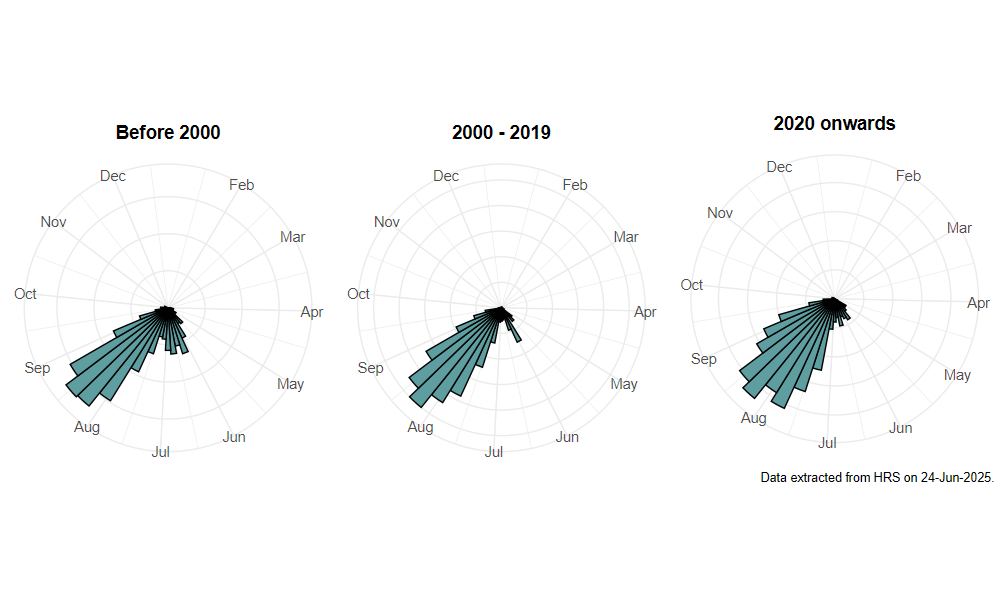Melangyna umbellatarum (Fabricius, 1794)
Identification
Identification difficulty = 3. ![]()
![]() according to Ball & Morris, 20241
according to Ball & Morris, 20241
Synonymy
Syrphus umbellatarum Fabricius in Coe(1953)2.
Biology
The larva is aphidophagous, and appear to have a clear preference for Cavariella aphids on white umbels. Adults are usually found in or near woodland, especially on the flowers of Hogweed Heracleum sphondylium and Wild Angelica Angelica sylvestris. Males hover high over paths and clearings.
Flight period
The following plots show the number of unique records per week excluding those reported to be of immature stages.

Distribution
Widely distributed but scarce south of a line between the Ribble and Humber Estuaries. It is much scarcer in northern England, but extends into northern Scotland. This species can be confused with M. compositarum and M. labiatarum and is very difficult to separate from M. ericarum, so care is needed.

Trends
The following plots show the Frescalo TFactor vs year and a map of the rescaled frequency (all records) for the species.